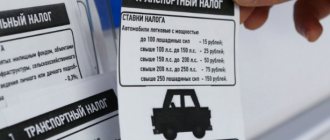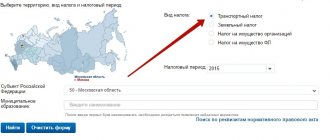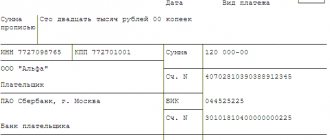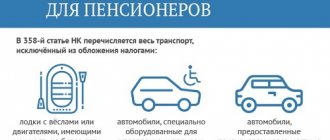Chapter 28 of the Tax Code of the Russian Federation is devoted to transport tax. Transport tax in 2017-2016 is a regional type of tax, which means that in addition to federal tax exemptions, at the regional level local authorities can assign benefits or even exempt the car owner from paying this tax.
The introduction of benefits at the regional level directly depends on local authorities. Most often they are introduced for certain categories of citizens, such as veterans of the Great Patriotic War, combat veterans, Heroes of Russia and the USSR, Chernobyl victims, disabled people, labor veterans, large families. Also, some types of transport may be exempt from tax due to their low power or for another reason. The main thing is to understand that each region has its own type of benefits or complete exemption from payment of transport tax.
Who should pay transport tax
Transport tax is a mandatory regional tax that is paid by vehicle owners to the budget of a constituent entity of the Russian Federation.
The category of citizens obligated to pay transport tax is specified in Article 357 of the Tax Code of the Russian Federation.
In accordance with the current legislation, taxpayers for the payment of transport tax are persons on whom, in accordance with the legislation of the Russian Federation, vehicles recognized as an object of taxation are registered.
In accordance with the current legislation, the objects of taxation are cars, automobiles, motorcycles, scooters, buses and other self-propelled machines and mechanisms on pneumatic and caterpillar tracks, airplanes, helicopters, motor ships, yachts, sailing ships, boats, snowmobiles, motor sleighs, motor boats, jet skis , non-self-propelled (towed vessels) and other water and air vehicles.
Organizations are required to calculate both the tax amount and the amount of the advance payment independently. In this case, the total amount is calculated at the end of the tax period for each unit of transport separately. To do this, the corresponding tax base must be multiplied by the tax rate. The payment of the advance payment is determined as a quarter of the above product. And the amount that should ultimately go to the budget is calculated as the difference from the deduction of advance payments from the total amount of accrued tax.
Deadlines for payment of transport tax
Taxpayers pay car tax to the budget at the location of the vehicles.
taxpayers-organizations pay advance tax payments calculated at the end of each reporting period in the amount of one-fourth of the product of the corresponding tax base, tax rate and tax benefits.
The deadlines for paying advance payments and the deadlines for paying the tax amount based on the results of the reporting period are established by the relevant law of the constituent entity of the Russian Federation, but in any case, the deadline for paying the tax calculated based on the results of the tax period cannot be earlier than February 1 of the year following the expired tax period.
Taxpayers who are individuals pay transport tax on the basis of a tax notice sent by the tax authority. Starting from 2021, individuals must pay transport tax no later than December 1 of the year following the expired tax period (previously, the deadline for paying transport tax was October). That is, the transport tax for 2021 must be paid by citizens no later than December 1, 2021 at the rates established for 2021, for 2021 - before December 1, 2021, for 2021 - before December 1, 2019.
How is transport tax calculated in 2017-2016?
The procedure and deadline for paying transport tax is regulated by the legislation of the Russian Federation. Payment is made by the taxpayer directly to the local budget. The deadline for paying car tax is specified in Article 383 of the Tax Code of the Russian Federation. The amount of tax depends on the number of months during which the vehicle was operated. The tax rate is established by the laws of the constituent entities of the Russian Federation, and the subject retains the right to differentiate the tax rate based on engine power, jet engine thrust or gross tonnage of the vehicle per one horsepower of a vehicle engine, one kilogram of jet engine thrust, one register ton of a vehicle means or one unit of vehicle.
It should be remembered that when establishing the useful life, that is, when determining the “age” of the vehicle, calculations are carried out as of January 1 of the current year.
Tax rates are established by the laws of the constituent entities of the Russian Federation, respectively, depending on the engine power, jet engine thrust or gross tonnage of the vehicle per one horsepower of the engine of the vehicle, one kilogram of the thrust of the jet engine, one register ton of the vehicle. Each subject has different transport tax rates. The current transport tax rates can be found by following the link indicating the corresponding subject of the Russian Federation.
Current rates
As mentioned, the tax on vehicles primarily depends on the tax base and rate. So, for cars and trucks, the base is power, which is measured in horsepower.
The general rates are determined by the Tax Code of the Russian Federation (Article 361). However, there is no universal table for calculating transport tax. The fact is that in different areas the rates may be lower or higher. The limit is set to 10 times.
Rates for calculating transport tax in the table for 2021 can be found in our other material here.
Regarding the transport tax in Crimea, calculations in 2021 should be made according to the rates shown in the following table:
| Transport tax rates in Crimea | |
| Vehicle type | Rate (RUB) in 2021 |
| Passenger cars with engine power (per horsepower): | |
| up to 100 hp (up to 73.55 kW) inclusive | 5 |
| over 100 hp up to 150 hp (over 73.55 kW to 110.33 kW) inclusive | 7 |
| over 150 hp up to 200 hp (over 110.33 kW to 147.1 kW) inclusive | 15 |
| over 200 hp up to 250 hp (over 147.1 kW to 183.9 kW) inclusive | 20 |
| over 250 hp (over 183.9 kW) | 50 |
| Motorcycles and scooters with engine power (per horsepower): | |
| up to 20 hp (up to 14.7 kW) inclusive | 2 |
| over 20 hp up to 35 hp (over 14.7 kW to 25.74 kW) inclusive | 4 |
| over 35 hp (over 25.74 kW) | 10 |
| Buses with engine power (per horsepower): | #colspan# |
| up to 200 hp (up to 147.1 kW) inclusive | 10 |
| over 200 hp (over 147.1 kW) | 20 |
| Trucks with engine power (per horsepower): | |
| up to 100 hp (up to 73.55 kW) inclusive | 12 |
| over 100 hp up to 150 hp (over 73.55 kW to 110.33 kW) inclusive | 20 |
| over 150 hp up to 200 hp (over 110.33 kW to 147.1 kW) inclusive | 25 |
| over 200 hp up to 250 hp (over 147.1 kW to 183.9 kW) inclusive | 30 |
| over 250 hp (over 183.9 kW) | 40 |
| Other self-propelled vehicles , pneumatic and tracked machines and mechanisms (with each horsepower) | 5 |
| Snowmobiles , motor sleighs with engine power (per horsepower): | |
| up to 50 hp (up to 36.77 kW) inclusive | 25 |
| over 50 hp (over 36.77 kW) | 50 |
| Boats , motor boats and other water vehicles with engine power (per horsepower): | |
| up to 100 hp (up to 73.55 kW) inclusive | 20 |
| over 100 hp (over 73.55 kW) | 50 |
| Yachts and other sailing-motor vessels with engine power (per horsepower): | |
| up to 100 hp (up to 73.55 kW) inclusive | 30 |
| over 100 hp (over 73.55 kW) | 100 |
| Jet skis with engine power (per horsepower): | |
| up to 100 hp (up to 73.55 kW) inclusive | 50 |
| over 100 hp (over 73.55 kW) | 100 |
| Non-self-propelled (towed) ships , for which gross tonnage is determined (from each registered ton of gross tonnage) | 30 |
| Airplanes, helicopters and other aircraft with engines (per horsepower) | 50 |
| Airplanes with jet engines (per kilogram of thrust) | 40 |
| Other water and air vehicles without engines (per vehicle unit) | 400 |
Increasing tax rates for expensive cars
Since 2015, tax authorities began to apply increased transport tax coefficients for expensive cars worth more than three million rubles in the following amount:
1.1 - in relation to passenger cars with an average cost of 3 million to 5 million rubles inclusive, from the year of manufacture of which 2 to 3 years have passed;
1.3 - in relation to passenger cars with an average cost of 3 million to 5 million rubles inclusive, from the year of manufacture of which 1 to 2 years have passed;
1.5 - in relation to passenger cars with an average cost of 3 million to 5 million rubles inclusive, no more than 1 year has passed since the year of manufacture;
2 - in relation to passenger cars with an average cost of 5 million to 10 million rubles inclusive, no more than 5 years have passed since the year of manufacture;
3 - in relation to passenger cars with an average cost of 10 million to 15 million rubles inclusive, from the year of manufacture of which no more than 10 years have passed; 3 - for passenger cars with an average cost of 15 million rubles, the year of which no more than 20 years have passed.
The list of cars of more than three million includes cars of the following brands:
- Audi TT RS (2.5 TFSI), S6, RS 4, Q7, S7, A8,
- BMW X6, 550i, X5 xDrive30d, Z4 sDrive35is, M3
- Cadillac Escalade, CTS-V, Escalade Hibrid
- Hyundai Equus 5.0 V8 GDI
- Infiniti FX50, QX70, QX80
- Jaguar XJ, Jaguar F-Type, XFR
- Jeep Grand Cherokee SRT8
- Land Rover Discovery 4, Range Rover Sport 3.0 V6, Range Rover Sport TDV6 3.0
- Lexus LX 570, LS 460
- Mercedes-Benz ML 350, Mercedes-Benz SLK 55 AMG, Mercedes-Benz C 63 AMG, Mercedes-Benz GL 350
- Porsche Carrera 4S, Porsche Panamera GTS, Porsche Cayenne Turbo, Porsche 911 GT3, Porsche Cayenne Turbo S and others.
The price group over 15 million rubles includes cars from the brands Aston Martin, Bentley, Bugatti, Ferrari, Lamborghini, Rolls-Royce.
Federal benefits for payment of transport tax
Federal benefits include those prescribed in Article 358 of the Tax Code of the Russian Federation (Part 2). It identifies types of transport (not only automobile) that are not subject to taxation, these include:
- rowing boats;
-specially equipped passenger cars intended for use by disabled people (engine power should not exceed 100 hp);
— sea or river vessels engaged in fishing;
— cargo and passenger ships intended for transporting citizens by sea or river, owned by a specialized organization carrying out transportation;
— specialized agricultural equipment: tractors, self-propelled combines, livestock and milk tankers, vehicles for transporting poultry and fertilizers. Moreover, all types of this transport must be registered with the organization carrying out agricultural activities. When using transport for other purposes, tax will need to be paid;
- transport owned by executive authorities, used in operational work that involves military or equivalent activities;
- stolen and wanted vehicles, in the presence of a document confirming the loss, issued by the authorized body;
— helicopters and airplanes belonging to medical organizations and sanitary services;
- ships, according to the register.
Which vehicles are not taxed?
The state does not withhold taxes for all vehicles. Those funds that are not registered in the general manner are prescribed in paragraph 2 of Art. 358 of the Tax Code of the Russian Federation. Among them:
- air transport, which is at the disposal of air ambulance and medical services;
- offshore drilling vessels;
- cargo and passenger river/sea/air transport that belong to private entrepreneurs and firms;
- passenger cars used by disabled people;
- sea and river modes of transport that are used for fishing;
- combines of all models, special vehicles (milk tankers, etc.) that are used for agricultural work;
- vehicles that have been stolen (if the fact of theft is confirmed);
- boats with oars or motor boats with an engine up to 5 hp;
- transport that appears in the Russian International Register of Ships.
Regional benefits for payment of transport tax
As noted above, each region has its own list of benefits when paying transport tax. To find out what benefits apply in your region, you need to contact your local tax office. There you will be provided with a full list of benefits. If you find out that you fall into one or more categories, then you need to apply in person for a benefit. In the application, you must indicate a link to the article of regional legislation, according to which you are entitled to a benefit, also indicate what vehicle you own (make, registration number, etc.), attach copies of documents confirming that you are the legal owner of this vehicle , copies of a document confirming your identity and rights.
Citizens entitled to the benefit, if there are several objects of taxation, are exempt from paying tax on one vehicle of their choice.
Transport tax benefits for pensioners
Pensioners are the most common group of citizens who have a chance to receive a transport tax benefit. Most often, a number of restrictions are introduced regarding the vehicle itself.
For example, in St. Petersburg, a pensioner will not pay transport tax at all if his car is of domestic production (Russian Federation, USSR until 1991). Also, boats, motor boats or other types of water transport (except for jet skis, yachts and sailing ships) whose engine power does not exceed 150 hp are not subject to taxation. inclusive.
Old-age pensioners in the Novosibirsk region are also entitled to benefits established by regional authorities. Thus, motorcycles and scooters whose engine capacity does not exceed 40 hp are completely exempt from the tax. A 20% discount on the tax rate in force this year applies to all types of passenger cars whose engine power does not exceed 150 hp. The 5% discount also applies to self-propelled vehicles and installations (machines or mechanisms) on crawler tracks. For more information about benefits for pensioners, read the article “Benefits for pensioners for paying transport tax”
Benefits for pensioners
It is pensioners who are considered the most common category of residents, who have every chance of receiving transport tax benefits. Usually, a number of restrictions are introduced regarding the vehicle itself. For example, in St. Petersburg, an elderly person may not pay tax at all if his car is domestic. Boats, motorboats and other types of water transport with engine power of no more than 150 horses are not yet subject to taxation.
In the Novosibirsk region, old-age pensioners are entitled to discounts established by regional authorities. Motor scooters and motorcycles with an engine capacity of no more than 40 horsepower are completely exempt from the tax. A discount on the tax rate of 20 percent applies to all types of passenger cars, their power should not exceed 150 horsepower. The 5 percent discount applies to both self-propelled vehicles and tracked units.
Benefits for paying transport tax in the regions of Russia
Let's take a more specific look at what benefits are available for paying transport tax in the regions.
Benefits for paying transport tax in the Republic of Bashkortostan
The grounds, procedure for calculation and benefits for paying transport tax are enshrined in the Law of the Republic of Bashkortostan dated November 27, 2002 No. 365-z “On Transport Tax”.
In the Republic of Bashkortostan the following categories of benefits for payment of transport tax have been established.
Regardless of the power of the cars, Heroes of the Soviet Union, Heroes of the Russian Federation, Heroes of Socialist Labor, Full Knights of the Order of Glory, Full Knights of the Order of Labor Glory are exempt from paying the tax.
Disabled people of groups 1, 2, 3, Labor veterans, Veterans of the Great Patriotic War, Chernobyl survivors, Veterans of military operations on the territory of the USSR, on the territory of the Russian Federation and the territories of other states, Veterans of military service, Veterans of public service can take advantage of tax benefits only for motorized wheelchairs , motorcycles, scooters and passenger cars with an engine power of up to 150 horsepower inclusive, as well as for trucks, from the date of manufacture of which more than 10 years have passed, with an engine power of up to 250 horsepower inclusive (for owners of two or more vehicles, a benefit is provided optionally for one vehicle of each type).
An additional benefit established in the Republic of Bashkortostan is available to owners of cars with installed gas equipment. Such citizens pay 80% of the tax rate per vehicle using natural gas as a motor fuel. If an individual owns more than 1 vehicle with gas equipment, the benefit is provided only for one vehicle of the person’s choice.
Benefits for paying transport tax in the Rostov region
Payment of transport tax in the Rostov region is provided for by the Law of the Rostov Region dated May 10, 2012 No. 843-ZS “On regional taxes and some taxation issues in the Rostov Region”, according to which it is established that residents of the Rostov Region are required to pay transport tax no later than February 10 of the year, following the tax period.
Regional beneficiaries for the payment of transport tax in the Rostov region are:
1. Heroes of the Soviet Union, Heroes of the Russian Federation, Heroes of Socialist Labor, citizens who are full holders of the Order of Glory, as well as public associations (organizations) created by them and consisting of them.
2. Veterans of the Great Patriotic War (participant in the war), combat veterans who have the right of ownership of passenger cars with an engine power of up to 150 horsepower (up to 110.33 kW), inclusive.
3. Citizens who have been granted ownership of a motor vehicle (minibus). Let us recall that in the Rostov region, the right to receive a minibus is given to low-income large families with an average per capita income, the amount of which does not exceed the subsistence level in the region per capita, who have lived in the Rostov region for at least 5 years and are raising eight or more minor children with dignity. .
4. Chernobyl victims, and citizens subject to the Law of the Russian Federation of May 15, 1991 No. 1244-1 “On the social protection of citizens exposed to radiation as a result of the disaster at the Chernobyl nuclear power plant.”
5. Disabled people who own motorcycles, scooters or cars with an engine power of up to 100 horsepower (up to 73.55 kW) inclusive.
Full exemption from payments and benefits
Let's move on to the key point of our article - let's talk about benefits. Let's look at each group of people separately.
Pensioners
Transport tax benefits for pensioners are calculated separately by each region: the authorities can completely cancel the payment of this bill or reduce the amount.
To receive benefits, a pensioner does not have to thoroughly study the legislation; it is enough to submit an application to the tax service at the place of residence or use of transport. A sample application is provided below.
The application for benefits must be filled out directly to the person who owns the vehicle.
If you have already reached retirement age, you can receive benefits by submitting an application in person to the tax office or using email. In the second case, you must also submit all scanned documents with your application.
The list of documents is very simple and includes the following:
- Pension certificate – certified copy.
- Documents that confirm your right to receive benefits in the region where you live.
- TS documents.
Disabled people and WWII veterans
In this case, benefits for the tax in question are provided to disabled people of groups 1–3 and WWII veterans. In St. Petersburg, benefits are also provided to those subjects who, as a result of the Chernobyl accident, have health problems, have impaired physical activity, etc.
Important: if you have a car and your child is included in the category of disabled people, then benefits are provided for you, but only if the seat of your car is specially equipped for the movement of people with disabilities.
Disabled people and WWII veterans can be provided with benefits only if:
- The vehicle is equipped to transport this category of people
- The vehicle was purchased through social security authorities
- The vehicle is registered to a disabled person or veteran.
Large families
Families with three or more children are also exempt from paying taxes. But in a number of cases, regions have a lack of budgetary funds and therefore they cannot provide benefits to this category of individuals.
However, with large families everything is extremely difficult. For example, in St. Petersburg, a large family is considered to be a family that includes three or more children.
But if we talk about transport taxes, then benefits are provided to families who have four or more children. As you can see, regarding the provision of benefits, you need to contact directly the regional center where you live.
You can receive benefits by providing copies of each child’s birth certificate and car documents.
To receive benefits, you must provide a list of documents, which you can see in the table below:
So, here is all the information about the transport tax, namely about the provision of benefits. If you are a person included in the category of people exempt from paying taxes, then now you know how to apply for them and where to go.
back to menu ↑









